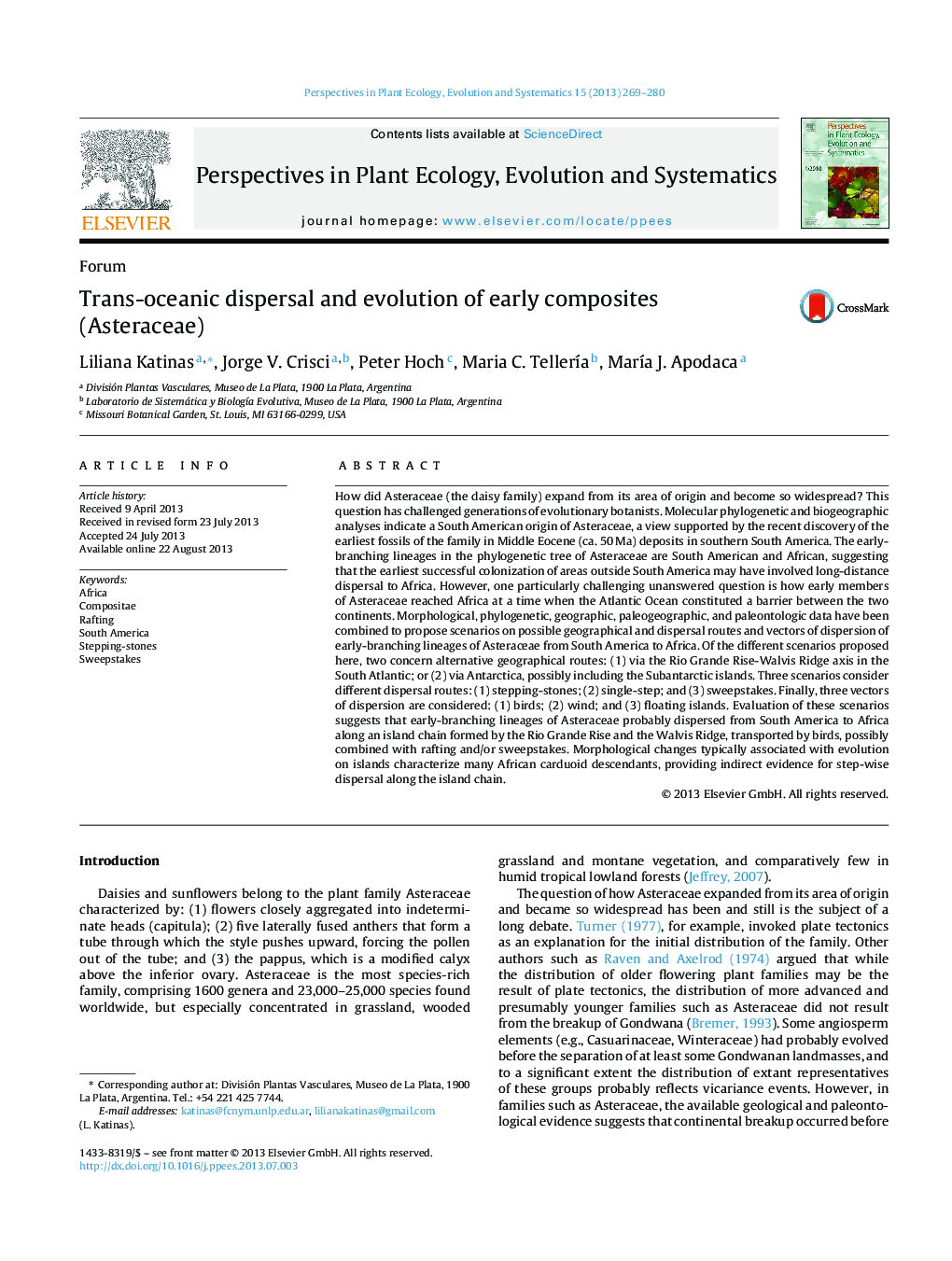| کد مقاله | کد نشریه | سال انتشار | مقاله انگلیسی | نسخه تمام متن |
|---|---|---|---|---|
| 4401024 | 1307047 | 2013 | 12 صفحه PDF | دانلود رایگان |

How did Asteraceae (the daisy family) expand from its area of origin and become so widespread? This question has challenged generations of evolutionary botanists. Molecular phylogenetic and biogeographic analyses indicate a South American origin of Asteraceae, a view supported by the recent discovery of the earliest fossils of the family in Middle Eocene (ca. 50 Ma) deposits in southern South America. The early-branching lineages in the phylogenetic tree of Asteraceae are South American and African, suggesting that the earliest successful colonization of areas outside South America may have involved long-distance dispersal to Africa. However, one particularly challenging unanswered question is how early members of Asteraceae reached Africa at a time when the Atlantic Ocean constituted a barrier between the two continents. Morphological, phylogenetic, geographic, paleogeographic, and paleontologic data have been combined to propose scenarios on possible geographical and dispersal routes and vectors of dispersion of early-branching lineages of Asteraceae from South America to Africa. Of the different scenarios proposed here, two concern alternative geographical routes: (1) via the Rio Grande Rise-Walvis Ridge axis in the South Atlantic; or (2) via Antarctica, possibly including the Subantarctic islands. Three scenarios consider different dispersal routes: (1) stepping-stones; (2) single-step; and (3) sweepstakes. Finally, three vectors of dispersion are considered: (1) birds; (2) wind; and (3) floating islands. Evaluation of these scenarios suggests that early-branching lineages of Asteraceae probably dispersed from South America to Africa along an island chain formed by the Rio Grande Rise and the Walvis Ridge, transported by birds, possibly combined with rafting and/or sweepstakes. Morphological changes typically associated with evolution on islands characterize many African carduoid descendants, providing indirect evidence for step-wise dispersal along the island chain.
Journal: Perspectives in Plant Ecology, Evolution and Systematics - Volume 15, Issue 5, 20 October 2013, Pages 269–280